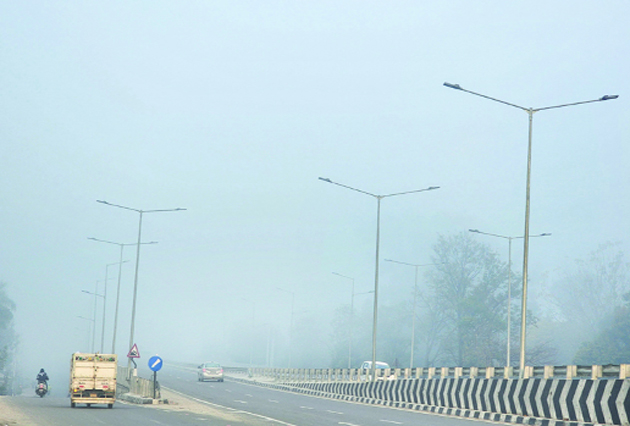Dr Rakesh K Gupta
Winters are here and now we come across with so dense clouds on ground that not only affect the visibility but also lead to health related problems. Is it really a cloud or something else? Well this ground cloud is called Fog. Fog is similar to clouds, but it forms near the ground rather than high up in the sky.
It can be thin or even very dense that people are hardly able to see through it and often leads to accidents on highway or can affect travelling of train as well as landing of a plane. Basically for fog and clouds to appear, the air has to cool down to a point where water vapour turns into tiny water droplets. This is called the dew-point temperature and it depends on quantity of moisture in the air. As far as season is concerned although fog mostly appears during autumn and winter seasons but it can occur in any season or month of year depending on topography and temperature of area.
How Fog is formed?
As we know water on heating changes into vapours state which is carried by air called as humidity. When this water vapour reaches a greater height, it gets condensed to convert into liquid droplets. Fog is also a type of cloud but it actually forms close to the ground when the air is filled with tiny droplets of water or ice. The air cools down quickly and cannot hold as much moisture as before. Due to cooling, the water vapors turn into small particles that stay near the ground. Fogs appear in certain conditions, such as when warm, humid air meets a cooler surface. It can also appear when warm moist air moves over a relatively quite colder body of water.
What are the factors that affect fog formation? One should be aware that a single factor never controls fog formation in isolation rather different factors collectively play cascade role where one factor forms the base for other to act. Fog can have “high spatial variability”, and its intensity can depend on factors like humidity, wind, and temperature. Areas near water bodies, for instance, may see denser fog because of the higher humidity. For example weeks long spell of fog occurrence is very common at Indo Gangetic Plain.
Why fog is opaque?
Well! Water is transparent as well as invisible in the vapour state As the air gets warmer it starts gaining more kinetic energy, and hence more water molecules can keep jostling around as vapour. Now if warm air containing such lot of water vapour cools down suddenly, the water molecules also slow down too much and thus are unable to stay in vapour form. Instead, these vapour molecules clump together into tiny droplets of liquid water. Since the droplets are still small enough to become rain drop, it hangs suspended in the air currents. The fog now appears opaque because the water droplets in fog scatter and reflect light, making it difficult to see through.
What are the different types of fog? Not all the fog is same although apparently seems to be. Some of important types of fog are:
Radiational:
It occurs mainly in autumn during low-wind or windless high-pressure weather conditions. This type of fog is seen during night and dawn as well. Radiation fog forms when the ground cools to the dew point. Since this type of fog is formed due to cooling of ground thus such fog tends to “burn-off” in the morning as the sun reheats the ground as well as air.
Advection (sea or lake fog):
Advectin type of fog is common at sea where warm, tropical air moves over cooler water. This fog gets formed when horizontal winds push warm, moist, air over a cool surface, where it condenses into fog.
Upslope fog:
This type of fog is found particularly in hilly areas. When the wind blows moist air up a slope, hill, or mountain, it start cooling as it rises. As the vapour cools, it results in condensation of moisture and thus fog is formed.
Evaporation fog: This is similar to advection fog and is formed as cold air passes over moist land or warm water. When the warmer water evaporates into the low bands of air, it warms the air and causes it to rise. As this warm, moist air rises, it mixes with the colder air until its humidity reaches 100 per cent, and fog is formed.
(The author is Lecturer Zoology, GGHSS Samba)
Trending Now
E-Paper


